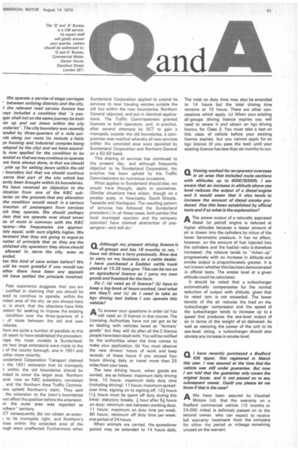Q Having worked for an operator overseas in an area that
Page 53

If you've noticed an error in this article please click here to report it so we can fix it.
included route sections with altitudes up to 4000/5000ft, I am aware that an increase in altitude above sea level reduces the output of a diesel engine and it would seem that it also tends to increase the amount of diesel smoke produced. Has this been established by official tests and if so what is the explanation?
AThe power output of a naturally aspirated diesel (or petrol) engine is reduced at higher altitudes because a lesser amount of air is drawn into the cylinders by virtue of the lower barometric pressure. It has no effect, however, on the amount of fuel injected into the cylinders and the fuel/air ratio is therefore increased: the mixture tends to ''richen up" progressively with an increase in altitude and smoke output is proportionately greater. It is not known whether this has been demonstrated in official tests. The smoke level at a given altitude could be calculated.
It should be noted that a turbocharger automatically compensates for the normal reduction of output with altitude, given that its rated rpm is not exceeded. The lower density of the air reduces the load on the turbocharger compressor and the speed of the turbocharger tends to increase up to a speed that produces the sea-level output of air in terms of the weight of air delivered. As well as restoring the power of the unit to its sea-level rating, a turbocharger should also obviate any increase in smoke level.




























































































